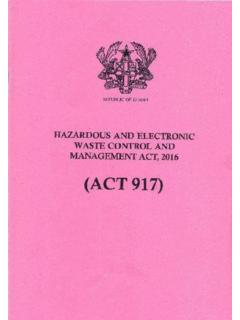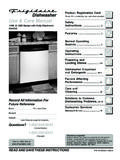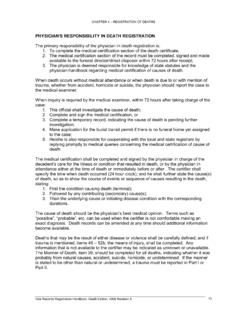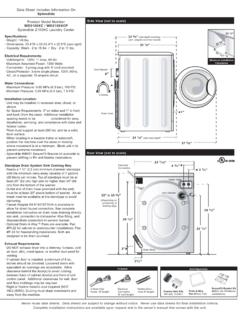Transcription of MSDS CARBON STEEL - Peterson Steel
1 In Water: N/A< - < - < - < - < - above is a summary of elements used in alloying STEEL . Various grades of STEEL will contain different combinations of these elements may also be present in minute amounts.< - < - (Sulfur Dioxide)5 (Sulfur Dioxide) < - < - < - 10< - < - < - 10< - (V)Nickel (Ni)Phosphorous (P)Silicon (S)Sulfur (S)7440-42-87440-44-07440-47-37440-03-17 440-50-87439-89-67439-92-17439-96-5 Iron (Fe)Lead (Pb)Manganese (Mn)Molybdenum (Mo)Boron (B) CARBON (C)Chromium (Cr)Copper (Cu)Columbium (Cb)1510N/AN/A< - (Al)Bismuth (Bi)7440-69-9< - WeightOSHA PEL (mg/m3) ACHIG-TLV (mg/m3)EXPOSURE LIMITSI ngredients Material or CompoundCAS Number7429-90-5 MATERIAL SAFETY DATA SHEETE mergency Phone Number: (508) 853-3630 Issue Date: March 1, 2004 TRADE NAME: CARBON and Alloy STEEL Chemical Name: AISI/SAE 10xx thru DataVapor Density: N/AMelting Point (approximate): 2800 F% Volatile by Volume: N/AVapor Pressure (mm Hg@20 C): N/AAcidity/Alkalinity: PH - N/AMaterial is (at normal conditions): SOLIDA ppearance and Odor.
2 Silver-Grey, OdorlessBoiling Point: N/ASpecific Gravity (H2O = 1): Approximately 7 Personal ProtectiveEquipmentEmergency MedicalPETERSONSTEEL Corporation61 West Mountain Street ~ Worcester, MA 01606-0328 Respiratory Protection:Appropriate dust/mist/fume respirator should be used toavoid excessive inhalation of particulates. If exposure limitsare reached or exceeded, use NIOSH approved and Face:Safety glasses should be worn when grinding or shields should be worn when welding or , Arms and Body:Protective gloves should be worn as required for welding,burning or handling Clothing and Equipment:As required depending upon operations and safety :Remove to fresh air; if condition continues, consult a Contact:Flush thoroughly with running water to removeparticulate; obtain medical Contact:Remove particles by washing thoroughly with soapand water. Seek medical attention if condition :If significant amounts of metal are ingested,consult a fumes and dust of iron-oxide, manganese, copper, zinc and lead may result in metal fume fever.
3 Typical symptoms lastSteel products in their solid state present no inhalation, ingestion, or contact health hazard. Operations such as burning, welding, sawing, brazing, grinding, and machining, which result in elevating the temperature of the product to, or aboveAluminum: May initiate fibrotic changes to lung : Bronchitis, pneumonitis, lack of 12 to 48 hours and consist of a metallic taste in the mouth, dryness and irritation of the throat, chills and : Chronic and prolonged inhalation of high concentrations of fumes or dust of the following elements may leadBismuth: No chronic debilitating symptoms : Respiratory tract irritation, possible liverBoron: No chronic debilitating symptoms kidney damage, bone : Lesions of the skin and mucous membranes, Nickel: Lesions of the skin and mucous membranes,possible cancer of the nose or lungs-bronchogenic possible cancer of the nose or lungs-bronchogenic Sulfur: (as Sulfur Dioxide) Edema of the.
4 Anemia, urinary dysfunction, weakness, Vanadium: (as Vanadium Pentoxide) Emphysema, : No chronic debilitating symptoms : Necrosis of the : Siderosis, pulmonary and ExplosionExtinguishing Media: For molten metal use dry powder or sand (DO NOT USE WATER ON MOLTEN METAL).Fire and Explosion Hazards: STEEL products do not present fire or explosion hazards under normal conditions. Fine metal particles such as produced in grinding or sawing can burn. High concentrations of metallic fines in air may Flash Point: N/AAuto Ignition Temperature: N/AFlammable Limits in Air (Upper & Lower): N/AEnvironmentalConditions to Avoid: STEEL at temperatures above the melting point may liberate fumes containing oxides of iron and alloying elements. Avoid generation of airborne fumes and Decomposition Products: Metallic dust or fumes may be produced during welding, burning, grinding and possible machining.
5 Refer to ANSI information in this msds was obtained from sources which we believe are reliable. However, the information isIn welding, precautions should be taken for airborne contaminants which may originate from components of Spill or Leak Procedures: Fine turnings and small chips should be swept or vacuumed. Scrap metal can be reclaimed for Disposal Method: Used or unused products should be disposed of in accordance with Federal, State Health and Safety InformationHealthto the conditions listed opposite the element: its melting point, or result in the generation of airborne particulates, may present hazards. The major exposure hazard isinhalation. Effects or overexposure to fume and dust are as follows:Acute: Excessive inhalation of metallic fumes and dust may result in irritation of eyes, nose and throat. High concentrations constipation, nausea, nervous causing Exposure Limits: See Products Ingredients Section 1.
6 Chromium and Nickel have been identified bythe International Agency for Research on Cancer (IARC) and/or the National Toxicology Program (NTP) as potential Zinc: Gastrointestinal inflammation reported in animal Medical Conditions aggravated by Exposure: Individuals with chronic respiratory disorders ( : asthma, chronic bronchitis, emphysema, etc.) may be adversely affected by any fume or airborne particulate matter an explosion : StableIncompatibility: (Materials to avoid) Reacts with strong acids to form Hydrogen out of or in any way connected with the handling, storage, use or disposal of the local laws and regulations. Disposer must comply with Federal, State and local disposal or discharge Informationof flammable without any representation or warranty, express or implied, regarding the accuracy or correctness. The conditionsor methods of handling, storage, use and disposal of the product are beyond our control and maybe beyond our this and other reasons, we do not assume responsibility and expressly disclaim liability for loss, damage or expensethe welding rod.
7 Arc or spark generated when welding or burning could be a source of ignition for combustionDISCLAIMER






